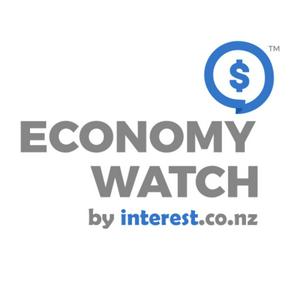Smoke & mirrors
Kia ora,Welcome to Friday’s Economy Watch where we follow the economic events and trends that affect Aotearoa/New Zealand.I'm David Chaston and this is the international edition from Interest.co.nz.And today we lead with news the US Fed looks more trapped in policy choices than it has for a long time.But first up today, a US-UK trade deal was announced to great fanfare. But in fact it isn't much. Rather it is a small set of carve-outs from the previous base case: Car tariffs on British-made cars would come in at 10% rather than 27.5%, steel tariffs would go to zero and the threat of future pharmaceutical tariffs would recede. The overall headline US tariff of 10% seems to still be in place; the UK has offered more market access to the US and a Boeing airplane order. But the US did not get changes on food standards or the UK's digital services taxation. The whole thing is very underwhelming. All headlines, no substance.But the equity markets liked it, even if the bond markets didn't. The USD rose on the news. Perhaps the equity markets also see progress coming in tomorrow's Swiss meeting between China and US representatives?Meanwhile, US jobless claims fell last week and by a bit more than seasonal factors would have assumed, coming in right at the level expected by analysts. There are now 1.846 mln people on these benefits, whereas a year ago there were 1.743 mln on them, a +5.9% rise.American labour productivity fell -0.8 in the March 2025 quarter as output decreased -0.3% and hours worked increased +0.6%. It is their first decrease in productivity since the volatile pandemic years, and prior to that, the first Trump presidency.March wholesale inventories rose marginally (+0.4%) but so did sales in the pre-tariff rush, so the inventory-to-sales balance was little-changed and not exhibiting any stress.Also not changing much were American inflation expectations in April, which isn't as sanguine as it sounds because they came in at the same elevated 3.6% level they jumped to in March. However, households’ perceptions about their current financial situations deteriorated, with the share of consumers reporting that they are somewhat or much worse off compared to one year ago increasing. Similarly, households’ expectations about their future financial situations deteriorated, with the share of those believing they will be somewhat or much worse off a year from now also rising.In Malaysia, their central bank held its policy rate at 3% overnight, as was expected. They have low inflation, 1.4%, and a good +4.4% economic expansion but one that is fading. And they are vulnerable to the tariff war. In the meantime, Malaysian industrial production is still expanding at a healthy clip.In Europe, German industrial production is on the come-back up +3.0% in March from February, and for the first time since May 2023, hardly lower than year-ago levels. Of course, this is data that predates the onset of the US tariff war.In England, their central bank cut its policy rate by -25 bps to 4.25%, also as expected. But two of their nine members voted for no change. It is their fourth rate cut since August 2023, when their rate reached 5.25% in the previous cycle. They currently have a 2.6% inflation rate, slowly easing, and a +1.4% economic expansion rate.With the Bank of England following the ECB down, along with Canada, soon Australia, and likely New Zealand, it does point out that the US Fed is now boxed in by US fiscal policy, basically unable to cut rates there because of the immediate inflation risks.In Australia, they changed their laws making it clearer that buy-now-pay-later contracts are covered by their National Credit Code (which is Schedule 1 to their National Credit Act). ASIC has now issued regulatory guidance for the BNPL sector.We should probably note that lithium prices have fallen further, with the bubble well and truly over, and prices back to their pre-bubble 2021 levelsThe reduction impetus is going out of global container freight rate changes, down just -1% last week to be -23% lower than year-ago levels. Bulk cargo rates stopped rising in the past week.The UST 10yr yield is at 4.37%, up +10 bps from this time yesterday.The price of gold will start today at US$3303/oz, and down -US$81 from yesterday.Oil prices are firmer today, up +US$1.50 at just under US$60/bbl in the US and the international Brent price is now just under US$63/bbl.The Kiwi dollar is now at 59.1 USc, down -60 bps from yesterday at this time, down a full -1c from Wednesday. Against the Aussie we are down -20 bps at 92.3 AUc. Against the euro we are unchanged at 52.6 euro cents. That all means our TWI-5 starts today just on 67.6 and down another -20 bps.The bitcoin price starts today at US$101,054 and up +4.6% from yesterday. Volatility over the past 24 hours has been moderate at just under +/- 3.0%.You can find links to the articles mentioned today in our show notes.You can get more news affecting the economy in New Zealand from interest.co.nz.Kia ora. I'm David Chaston. And we will do this again on Monday.

